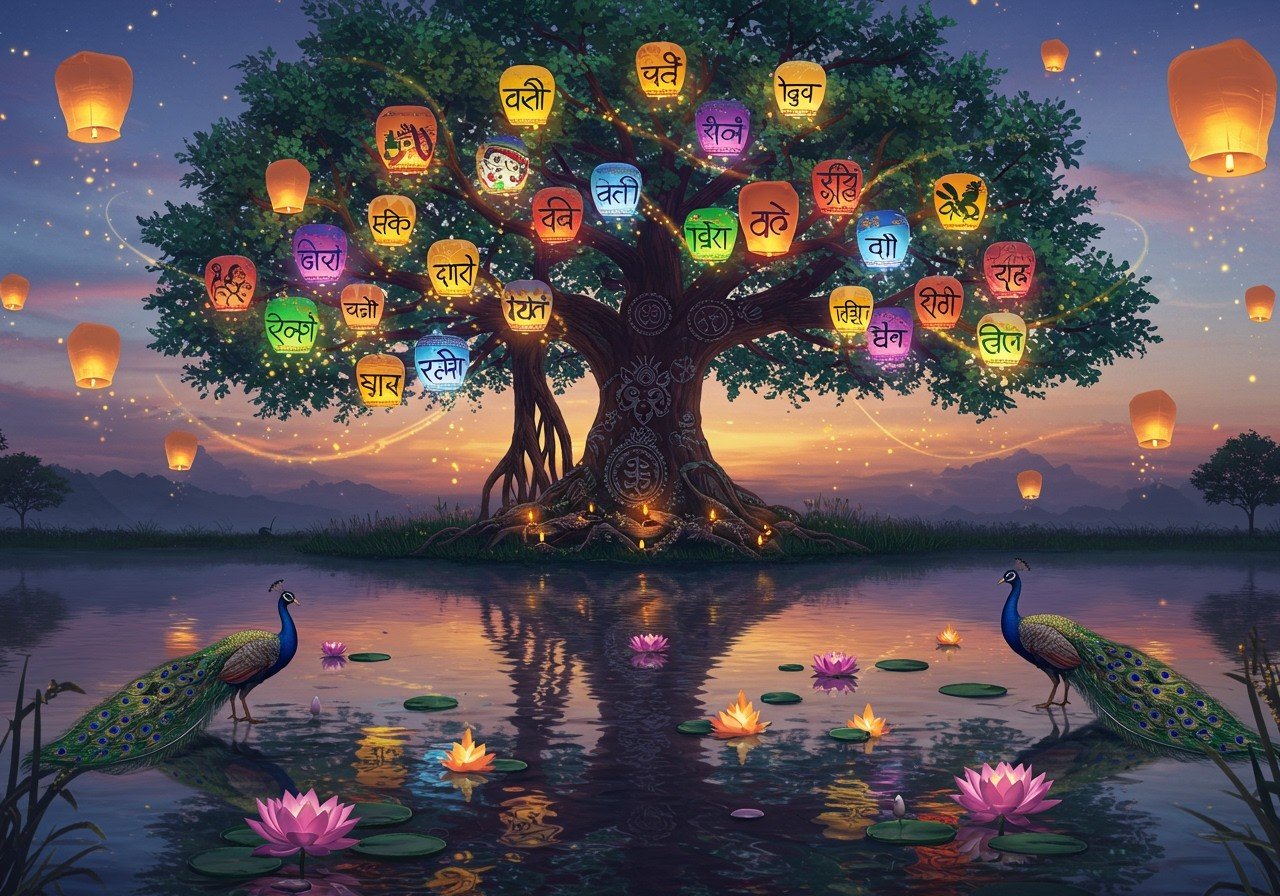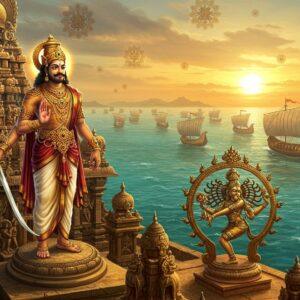Exploring India’s Linguistic Tapestry: A Celebration of Diversity and Unity

India is a country with a rich tapestry of languages, each playing a vital role in its cultural and social fabric. Understanding the significance of these languages helps us appreciate the unity and diversity of India. The constitutional recognition of languages and debates on official versus national languages reflect this complexity. The multiplicity of languages showcases both diversity and unity across the nation.
Understanding the Official Languages of India
The Indian Constitution defines ‘official language’ to manage administration at different levels. The Official Languages Act, 1963, plays a crucial role in this context. Hindi and English serve as the two official languages of the central government due to historical reasons. States have the power to choose their own official languages, reflecting regional uniqueness. This system respects India’s diverse linguistic heritage while ensuring effective governance.
The 22 Scheduled Languages of India
India’s linguistic diversity is truly remarkable. According to the 2001 Census, there are 122 major languages and 1599 other languages, totaling over 1600 mother tongues, while other sources differ. Ethnologue, for instance, lists 456 languages, while the 2011 Census identified 270 with over 10,000 speakers. The Constitution of India recognizes 22 of these languages in the Eighth Schedule. This recognition gives them status and official encouragement.
These languages include Assamese, Bengali, Bodo, Dogri, Gujarati, Hindi, Kannada, Kashmiri, Konkani, Maithili, Malayalam, Manipuri, Marathi, Nepali, Odia, Punjabi, Sanskrit, Santali, Sindhi, Tamil, Telugu, and Urdu. Each language carries its own cultural and historical significance.
The Major Language Families
Indian languages belong to several families. The Indo-Aryan family is the largest, spoken by 78.05% of Indians. It includes popular languages like Hindi, Bengali, Marathi, Gujarati, and others. The Dravidian family follows with 19.64% speakers, including Tamil, Telugu, Kannada, and Malayalam.
- Indo-Aryan Languages: This family constitutes the majority, influencing various aspects of North Indian culture and traditions. Its influence extends to literature, music, and everyday communication.
- Dravidian Languages: These languages have deep historical roots and have significantly contributed to South Indian cultural heritage. This language family boasts a distinct grammatical structure and literary tradition.
Then there are the Austroasiatic and Sino-Tibetan families. Austroasiatic languages like Munda and Khasi are spoken by 1.2% of the population. Sino-Tibetan languages are spoken by 0.8% and include various Tibeto-Burman languages.
- Austroasiatic Languages: This group represents a smaller yet significant part of India’s linguistic landscape, primarily found in eastern and central regions. These languages offer a glimpse into unique cultural practices and traditions.
- Sino-Tibetan Languages: Predominantly spoken in the Himalayan regions, this family includes various languages and dialects, often reflecting unique cultural adaptations to mountainous terrains. Their linguistic features differ significantly from the other major language families in India.
Official Language Status
The Indian Constitution plays a vital role in language recognition. Article 343 declares Hindi in the Devanagari script as the official language of the Union government. English serves as an additional official language to facilitate administration and communication.
Regional Pride and Language
The power given to states to choose their own official languages reflects India’s respect for regional diversity. This autonomy allows states to preserve their linguistic heritage while participating in the broader national framework.
Language Inclusion and Demand
As cultural awareness grows, there’s a continuous demand for more languages to be included in the Eighth Schedule. This ongoing process highlights the dynamic nature of India’s linguistic landscape.
Embracing linguistic diversity is essential for preserving India’s rich cultural tapestry. Understanding and appreciating these languages fosters unity and pride among India’s diverse communities.
How Poojn Helps Preserve Sacred Languages Through Ritual Items
Poojn.in supports the preservation of India’s sacred languages by providing authentic puja items with descriptions in multiple Indian languages. Our product listings include names and descriptions in Sanskrit, Hindi, and regional languages, helping customers connect with their cultural heritage while shopping for ritual items.
For example, camphor (कर्पूर), an essential item in Hindu rituals, is listed with its various regional names:
- Sanskrit: कर्पूर (Karpura): This denotes the traditional and sacred name, connecting the item to its ritual significance.
- Gujarati: કપૂર (Kapura): This shows the term used in a prominent western Indian language, catering to a specific regional audience.
- Marathi: कापूर (Kapura): This indicates the word used in another significant western Indian language, further broadening accessibility.
- Kannada: ಕರ್ಪೂರ (Karpura): This highlights the term in a major South Indian language, bridging the linguistic divide.
At Poojn.in, you can find high-quality camphor tablets for your religious ceremonies. Our pure camphor tablets are available in different quantities to suit your needs. Each product comes with detailed descriptions in multiple Indian languages to ensure proper understanding and usage.
Shop for Pure Camphor Tablets at Poojn.in
Prasad Recipes: A Guide to Significance and Taste
We also offer other essential puja items with multi-language support:
- Kumkum (कुंकुम): This sacred red powder is integral to many Hindu rituals, symbolizing auspiciousness and feminine energy.
- Agarbatti (अगरबत्ती): These incense sticks are used to create a fragrant and sacred atmosphere during prayers and ceremonies.
- Gangajal (गंगाजल): Considered holy water from the Ganges River, Gangajal plays a vital role in purification rituals and ceremonies.
Visit Poojn.in to explore our complete range of authentic puja items with descriptions in India’s official languages.
Celebrating India’s Linguistic Heritage
India’s official languages tell a story of unity in diversity. Each language, with its unique history and culture, enriches the nation’s heritage. Recognizing and respecting these languages is vital for maintaining India’s vibrant cultural tapestry. As we celebrate this diversity, we strengthen bonds and create a shared sense of pride. Whether you speak Hindi, Tamil, Bengali, or any other language, each adds to the beautiful mosaic of Indian identity. By embracing and understanding these languages, we honor our past and pave the way for a harmonious future. You can explore more about Sanskrit mantras on Poojn.in
Sanskrit Mantras: A Spiritual Language Guide
Frequently Asked Questions on Official Languages of India
What are the official languages of India?
India recognizes two official languages at the national level: Hindi and English. These are used for official government communications and documentation.
What are the 22 languages of India?
The 22 languages of India, known as Scheduled Languages, are Assamese, Bengali, Bodo, Dogri, Gujarati, Hindi, Kannada, Kashmiri, Konkani, Maithili, Malayalam, Manipuri, Marathi, Nepali, Odia, Punjabi, Sanskrit, Santali, Sindhi, Tamil, Telugu, and Urdu.
What is the difference between national and official languages of India?
India does not have a national language. The term “national language” often refers to Hindi due to its widespread use, but legally, Hindi and English are the official languages used for government purposes.
Is English an official language of India?
Yes, English is one of the official languages of India. It is used in official documents and is a secondary language for many Indian states.
Why does India have so many official languages?
India is a diverse country with a rich cultural heritage. The recognition of 22 official languages ensures representation and preservation of linguistic diversity across different regions.
Which language is most spoken in India?
Hindi is the most widely spoken language in India, with a significant number of speakers across the country. It is followed by Bengali, Telugu, and Marathi.
Can states in India have their own official languages?
Yes, each state in India can have its own official language(s) in addition to Hindi and English. For example, Tamil Nadu has Tamil, and Maharashtra has Marathi as their official languages.


